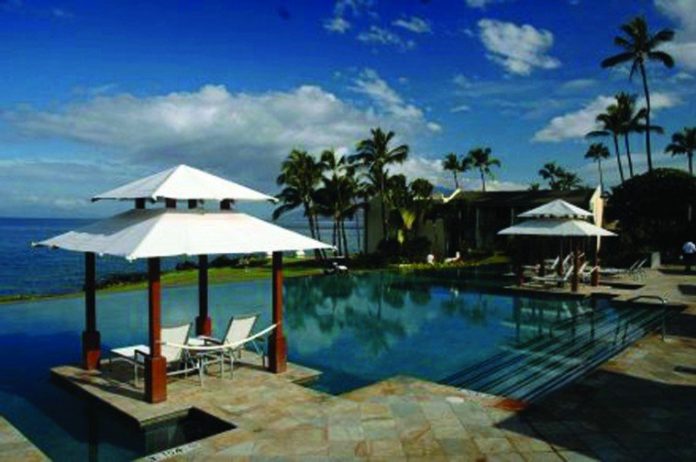The sentries were keeping me at bay; they stayed between me and the rest of the pod. Below me was blue water, no bottom, and shore was a good 800 yards away.
They allowed me to approach the herd, keeping a careful watch. My imitation whale calls worked: the spinners came to check me out.
The guards performed a graceful dance while the rest of the group played above water, accelerating to mach three before bursting into the air doing acrobatics. Spinner dolphins are slender creatures, not more than 100 to 150 pounds, lightning fast, playful and smart.
I thanked the man upstairs for giving me the opportunity to be amongst these magnificent and intelligent beings. Staying in shape by swimming long distances and scuba diving facilitated meeting up with these guys far off shore.
That was the most memorable of my many visits to Maui, probably the most popular of all the islands.
The beauty of living on the West Coast is that we can escape our wintry conditions this time of year and in five hours, bask in the warm, gentle breezes of the Hawaiian Islands.
Maui has much to offer, and requires multiple visits over several vacations to see it all. It is also one of those destinations where returning can become habitual.
Historical Lahaina, a whaling outpost of the 19th century, is the heartbeat of northwest Maui. Shops galore, quaint open air bars, bustling streets, the great banyan tree and harbor define this town. For the first-time Maui goer, visiting Lahaina is a must.
There are plenty of open air restaurants on the waterfront to hang out in while waiting to check in to one of the many hotels just north of town.
Kaanapali is the king of hotel row with miles of beaches, just minutes north of Lahaina. Continue north and there are more hotels in Kahana and resorts in Kapalua where I enjoyed my dolphin encounter.
This coastline boasts views of Molokai and Lanai. Should you travel in the winter and early spring, you will be treated to humpback whales breaching and slapping their pectoral fins on the waters not far offshore.
Go scuba diving and the whale calls underwater are an eerie sound: intimidating, especially when they’re loud and in limited visibility water.
For Maui neophytes, friends always recommend the “Road to Hana.” Go early. The last thing you want to do is undertake this windy, one lane (in many spots) road when all the other tourists are embarking on the same adventure.
Hana is home to several hotels specializing in tranquility overlooking picturesque Hana Bay.
This side of the island is the “wet” side. There are an abundance of waterfalls and a popular destination is the Seven Sacred Pools, about five miles south of Hana.
Both south and west, the road turns into gravel and you can experience the undeveloped and “natural” side of Maui.
The road eventually returns to pavement, known as the Pi’ilani Highway that gains altitude along the flanks of Haleakala. Along this road is a must do pit stop: Tedeschi Winery. From this winery vantage point, you can overlook spectacular views of Makena, Kihei and Molokini crater five miles offshore. The road descends the flanks of the extinct volcano and eventually heads back to Kahului where flights touch down.
Ascending to the top of Haleakala is an excursion for a different day. Again, leave early. Many depart well before daybreak to enjoy a sunrise from 10,000 feet up. Be prepared and dress warm for the cold, thin air. Haleakala National Park is a volcanic caldera reminiscent of a martian landscape: desolate and beautiful.
There is another remote road north of Kapalua that connects to Kahalui, which is a must-do adventure. This scenic, windy road traverses a rugged and undeveloped coastline.
The town of Kihei offers a multitude of affordable properties for the budget minded with expansive beaches and golf courses.
So for your next Hawaiian trip, consider Maui.













